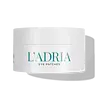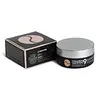What's inside
What's inside
 Key Ingredients
Key Ingredients

 Benefits
Benefits

 Concerns
Concerns

 Ingredients Side-by-side
Ingredients Side-by-side

Water
Skin ConditioningSorbitol
HumectantGlycerin
HumectantChondrus Crispus Powder
AbrasivePotassium Chloride
Glucomannan
Skin ConditioningAllantoin
Skin ConditioningCaffeine
Skin ConditioningAvena Sativa Kernel Extract
AbrasiveDipotassium Glycyrrhizate
HumectantNiacinamide
SmoothingTrehalose
HumectantSodium Hyaluronate
HumectantHydroxyacetophenone
AntioxidantHydroxyethylcellulose
Emulsion Stabilising1,2-Hexanediol
Skin ConditioningXanthan Gum
EmulsifyingCellulose Gum
Emulsion StabilisingPentylene Glycol
Skin ConditioningButylene Glycol
HumectantCI 42090
Cosmetic ColorantWater, Sorbitol, Glycerin, Chondrus Crispus Powder, Potassium Chloride, Glucomannan, Allantoin, Caffeine, Avena Sativa Kernel Extract, Dipotassium Glycyrrhizate, Niacinamide, Trehalose, Sodium Hyaluronate, Hydroxyacetophenone, Hydroxyethylcellulose, 1,2-Hexanediol, Xanthan Gum, Cellulose Gum, Pentylene Glycol, Butylene Glycol, CI 42090
Water
Skin ConditioningGlycerin
HumectantCarrageenan
Butylene Glycol
HumectantHydrolyzed Collagen
EmollientSodium Hyaluronate
HumectantHydrolyzed Hyaluronic Acid
HumectantSodium Acetylated Hyaluronate
HumectantHydroxypropyltrimonium Hyaluronate
Potassium Hyaluronate
Skin ConditioningSodium Hyaluronate Crosspolymer
HumectantHyaluronic Acid
HumectantPearl Extract
AntioxidantPolysorbate 80
EmulsifyingTocopheryl Acetate
AntioxidantUbiquinone
AntioxidantAcetyl Hexapeptide-8
HumectantCopper Tripeptide-1
Skin ConditioningOligopeptide-29
AntioxidantOligopeptide-32
AntiseborrhoeicPalmitoyl Pentapeptide-4
Skin ConditioningPalmitoyl Tripeptide-1
Skin ConditioningPalmitoyl Tetrapeptide-7
Skin ConditioningGlyceryl Polymethacrylate
Propylene Glycol
HumectantPalmitoyl Oligopeptide
CleansingPalmitoyl Tripeptide-5
Skin ConditioningPropanediol
SolventPentylene Glycol
Skin ConditioningCocos Nucifera Fruit Extract
EmollientPinus Sylvestris Leaf Extract
TonicRicinus Communis Seed Oil
MaskingButyrospermum Parkii Butter
Skin ConditioningBetaine
HumectantAllantoin
Skin ConditioningDipotassium Glycyrrhizate
HumectantCeratonia Siliqua Gum
EmollientSucrose
HumectantCyamopsis Tetragonoloba Gum
Emulsion StabilisingCellulose Gum
Emulsion StabilisingPotassium Chloride
Calcium Chloride
AstringentCalcium Lactate
AstringentCaprylic/Capric Triglyceride
MaskingSorbitan Caprylate
EmulsifyingPEG-60 Hydrogenated Castor Oil
EmulsifyingDiamond Powder
AbrasiveTitanium Dioxide
Cosmetic ColorantOleth-10
EmulsifyingTriethoxycaprylylsilane
Polysorbate 60
EmulsifyingSimethicone
EmollientMethyl Methacrylate Crosspolymer
Aluminum Hydroxide
EmollientSynthetic Fluorphlogopite
Arginine
MaskingDisodium EDTA
Chlorphenesin
AntimicrobialEthyl Hexanediol
Solvent1,2-Hexanediol
Skin ConditioningEthylhexylglycerin
Skin ConditioningParfum
MaskingWater, Glycerin, Carrageenan, Butylene Glycol, Hydrolyzed Collagen, Sodium Hyaluronate, Hydrolyzed Hyaluronic Acid, Sodium Acetylated Hyaluronate, Hydroxypropyltrimonium Hyaluronate, Potassium Hyaluronate, Sodium Hyaluronate Crosspolymer, Hyaluronic Acid, Pearl Extract, Polysorbate 80, Tocopheryl Acetate, Ubiquinone, Acetyl Hexapeptide-8, Copper Tripeptide-1, Oligopeptide-29, Oligopeptide-32, Palmitoyl Pentapeptide-4, Palmitoyl Tripeptide-1, Palmitoyl Tetrapeptide-7, Glyceryl Polymethacrylate, Propylene Glycol, Palmitoyl Oligopeptide, Palmitoyl Tripeptide-5, Propanediol, Pentylene Glycol, Cocos Nucifera Fruit Extract, Pinus Sylvestris Leaf Extract, Ricinus Communis Seed Oil, Butyrospermum Parkii Butter, Betaine, Allantoin, Dipotassium Glycyrrhizate, Ceratonia Siliqua Gum, Sucrose, Cyamopsis Tetragonoloba Gum, Cellulose Gum, Potassium Chloride, Calcium Chloride, Calcium Lactate, Caprylic/Capric Triglyceride, Sorbitan Caprylate, PEG-60 Hydrogenated Castor Oil, Diamond Powder, Titanium Dioxide, Oleth-10, Triethoxycaprylylsilane, Polysorbate 60, Simethicone, Methyl Methacrylate Crosspolymer, Aluminum Hydroxide, Synthetic Fluorphlogopite, Arginine, Disodium EDTA, Chlorphenesin, Ethyl Hexanediol, 1,2-Hexanediol, Ethylhexylglycerin, Parfum
Ingredients Explained
These ingredients are found in both products.
Ingredients higher up in an ingredient list are typically present in a larger amount.
1,2-Hexanediol is a synthetic liquid and another multi-functional powerhouse.
It is a:
- Humectant, drawing moisture into the skin
- Emollient, helping to soften skin
- Solvent, dispersing and stabilizing formulas
- Preservative booster, enhancing the antimicrobial activity of other preservatives
Allantoin is a soothing ingredient known for its protective and moisturizingg properties. Because of this, it is often added to products with strong active ingredients.
Studies show higher concentrations of this ingredient can promote wound healing.
Though it can be derived from the comfrey plant, allantoin is produced synthetically for cosmetic products to ensure purity.
Learn more about AllantoinButylene Glycol (or BG) is used within cosmetic products for a few different reasons:
Overall, Butylene Glycol is a safe and well-rounded ingredient that works well with other ingredients.
Though this ingredient works well with most skin types, some people with sensitive skin may experience a reaction such as allergic rashes, closed comedones, or itchiness.
Learn more about Butylene GlycolCellulose Gum is a water-soluble polymer that comes from cellulose. It is used to change the texture of a product and to help stabilize emulsions.
As an emulsifier, cellulose gum specifically thicken the texture of water-based products.
This ingredient is considered hypoallergenic and non-toxic. Cellulose Gum can be found in cosmetics, food, and other household goods such as paper products.
Learn more about Cellulose GumDipotassium Glycyrrhizate comes from licorice root.
Extracts of licorice have demonstrated to have antibacterial, anti‐inflammatory, antiviral, antioxidant properties.
One component, glabridin, has extra potent antioxidant and soothing properties. It has also been found to block pigmentation from UVB rays in guinea pigs.
Licorice Root also contains a flavonoid. Flavonoids are a natural substance from in plants. Flavonoids also have antioxidant properties.
Another component, glycyrrhizin, has been found to have anti-inflammatory and antimicrobial benefits. This may make licorice root extract effective at treating acne. However, more research is needed to support this.
Liquiritin is one of the flavone compounds found in licorice. It has been found to help lighten skin by preventing tyrosinase from reacting with tyrosine. When the two react, protein is converted to melanin. Melanin is the substance in your body that gives your features pigmentation.
Licorice root is native to Southern Europe and Asia. It has been used in traditional Chinese medicine to help with respiratory issues.
Learn more about Dipotassium GlycyrrhizateGlycerin is already naturally found in your skin. It helps moisturize and protect your skin.
A study from 2016 found glycerin to be more effective as a humectant than AHAs and hyaluronic acid.
As a humectant, it helps the skin stay hydrated by pulling moisture to your skin. The low molecular weight of glycerin allows it to pull moisture into the deeper layers of your skin.
Hydrated skin improves your skin barrier; Your skin barrier helps protect against irritants and bacteria.
Glycerin has also been found to have antimicrobial and antiviral properties. Due to these properties, glycerin is often used in wound and burn treatments.
In cosmetics, glycerin is usually derived from plants such as soybean or palm. However, it can also be sourced from animals, such as tallow or animal fat.
This ingredient is organic, colorless, odorless, and non-toxic.
Glycerin is the name for this ingredient in American English. British English uses Glycerol/Glycerine.
Learn more about GlycerinPentylene glycol is typically used within a product to thicken it. It also adds a smooth, soft, and moisturizing feel to the product. It is naturally found in plants such as sugar beets.
The hydrophilic trait of Pentylene Glycol makes it a humectant. As a humectant, Pentylene Glycol helps draw moisture from the air to your skin. This can help keep your skin hydrated.
This property also makes Pentylene Glycol a great texture enhancer. It can also help thicken or stabilize a product.
Pentylene Glycol also acts as a mild preservative and helps to keep a product microbe-free.
Some people may experience mild eye and skin irritation from Pentylene Glycol. We always recommend speaking with a professional about using this ingredient in your routine.
Pentylene Glycol has a low molecular weight and is part of the 1,2-glycol family.
Learn more about Pentylene GlycolPotassium Chloride can be bad for oily skin and be bad for acne prone skin.
Sodium Hyaluronate is hyaluronic acid's salt form. It is commonly derived from the sodium salt of hyaluronic acid.
Like hyaluronic acid, it is great at holding water and acts as a humectant. This makes it a great skin hydrating ingredient.
Sodium Hyaluronate is naturally occurring in our bodies and is mostly found in eye fluid and joints.
These are some other common types of Hyaluronic Acid:
Learn more about Sodium HyaluronateWater. It's the most common cosmetic ingredient of all. You'll usually see it at the top of ingredient lists, meaning that it makes up the largest part of the product.
So why is it so popular? Water most often acts as a solvent - this means that it helps dissolve other ingredients into the formulation.
You'll also recognize water as that liquid we all need to stay alive. If you see this, drink a glass of water. Stay hydrated!
Learn more about Water